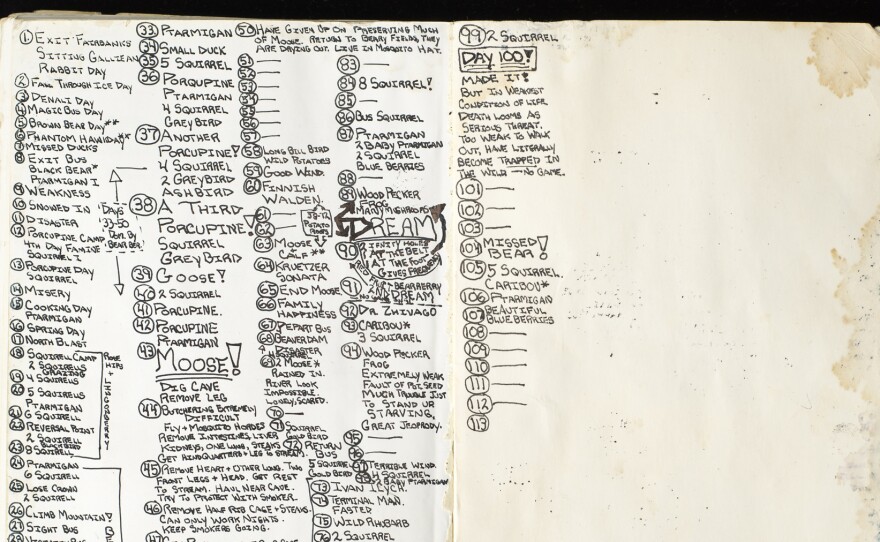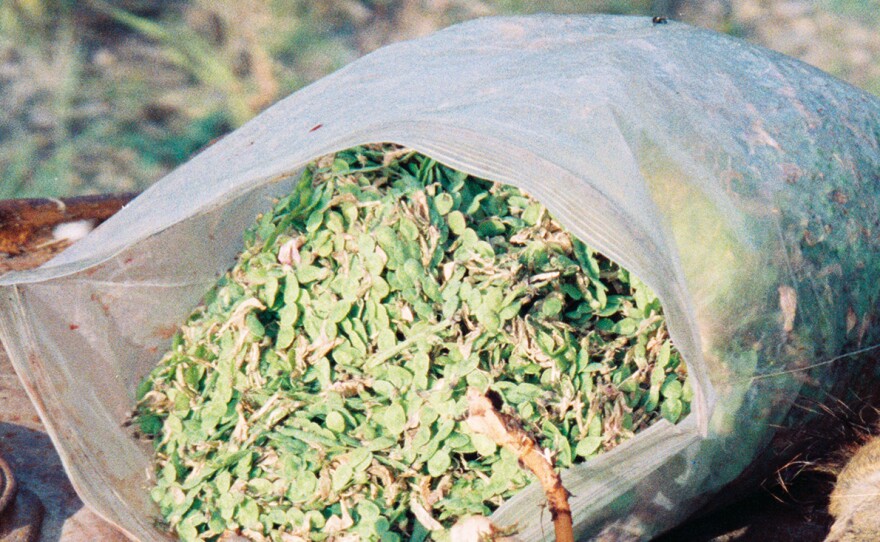
In August 1992, Christopher McCandless died in an abandoned bus in the Alaska wilderness after living mostly on squirrels, birds, roots and seeds for 113 days. Hunters found his body months later. Alaska state coroners declared starvation as the cause of death.
But a mystery lingered: What exactly did him in? A scientific paper published this spring by the journalist who'd been doggedly following the story offers another big clue.
Jon Krakauer, the author who enthrallingly told McCandless' story in the book Into the Wild (which was later made into a movie), has been pondering the question of his death for almost 23 years. And he's circled back again and again to one thing: McCandless' diary.
"There's one passage you just can't ignore, which is 'Extremely weak. Fault of potato seeds,'" says Krakauer. "He didn't say much in that journal, and nothing that definitive. He had reason to believe that these seeds – and not all these other foods that he had photographed and catalogued – had killed him."
The journal entry, referencing the seeds of the Eskimo potato plant, has nagged Krakauer enough to inspire a series of hypotheses about the toxicity of the said seeds, a protracted debate with Alaskan chemists and multiple book revisions.
After a tip from a writer named Ronald Hamilton with a grim story about poisonings in Nazi concentration camps, Krakauer decided to test the seeds for a neurotoxin called beta-ODAP. He took a crash course in organic chemistry, teamed up with a chemist at Indiana University in Pennsylvania and hired a company to analyze seed samples.
By September 2013, after sending samples to a lab in Michigan, Krakauer thought he'd closed the case. Results showed that the seeds had a lethal concentration of a compound called beta-ODAP that has caused gradual weakening and paralysis in famine victims relying on a certain pea.
But after more back and forth from the scientific and non-scientific community in Alaska, Krakauer realized the only way to prove his point was to jump into the world of academic peer-reviewed publishing. Obsessed? Maybe.
He sent the seeds back to the Michigan lab, Avomeen Analytical Services, for more thorough tests. About nine months and some $20,000 later, Krakauer published results in the journal Wilderness & Environmental Medicine in March showing that the seeds did indeed contain a toxin. But it wasn't beta-ODAP. It was another amino acid, L-canavanine.
Plenty of legumes store this toxin in their seeds to ward off predators. The compound is similar an essential amino acid, arginine, and it tricks the body's cells into thinking it's good for them. "And then it wreaks havoc," says Krakauer. "It screws up your ability to metabolize, so you essentially starve. It short-circuits your metabolism."
The plant in question is the Eskimo potato, also known as alpine sweetvetch, or Hedysarum alpinum. The hardy little plant grows across Alaska and northern Canada. McCandless, along with plenty of Alaska natives, had relied on the carrot-like roots as a staple. But Krakauer could find no record of people eating the seeds. The L-canavanine toxin could be why.
"Once the roots became unpalatable in midsummer, the natives did not eat these seeds," Krakauer explains. "So, they knew something that we didn't."
Krakauer had a co-author on the paper: Jonathan Southard, a biochemist at Indiana University of Pennsylvania.
"Through all these twists and turns, now, finally, I think we have figured out what is in those plants," says Southard. "There's millions of plants out there, and they make lots of strange compounds that we don't know about yet."
A paper from 1960 had found the same toxin in a few species of the plant. "So, scientifically, it's a really small finding. We've confirmed something that was already in the literature," adds Southard. The controversy, he says, "has to do with the story, not with the science. And people in Alaska seem to have very strong viewpoints about this."
The Alaskans who've questioned Southard and Kraukauer's paper fall into two categories: state residents who've long grown tired of the McCandless saga and chemists.
Thomas Clausen is an emeritus professor at the University of Fairbanks and an expert on toxins in Alaskan plants who did the original tests on the seeds in the 1990s. "I admit that I very well could have missed this compound in my earlier study," he tells The Salt. But he also says he's holding out for an independent analysis to confirm the Avomeen results.
The debate about how this young man died will likely continue. There's no way to know exactly how many of the seeds Chris McCandless ate in that two week period leading up to his death. And there isn't much research on what eating the seeds does to the human body. But Krakauer's research confirms the presence of this toxin in the plant. It's the same toxin in alfalfa and jack bean, which, Krakauer writes, may have permanently paralyzed 100,000 people in the 20th century.
The real lesson people should take away from this, Krakauer says, is that "there are many, many species where you can eat one part and will die if you eat another part ... You gotta be careful out there."
And regardless of exactly the mechanism that killed this young man, there's this: "What he did was not easy. He lived for 113 days off the land in a place where there's not a lot of game," says Krakauer. "And he did really well. If he hadn't been weakened by these seeds, I'm confident he would have survived."
Copyright 2015 NPR. To see more, visit http://www.npr.org/.






